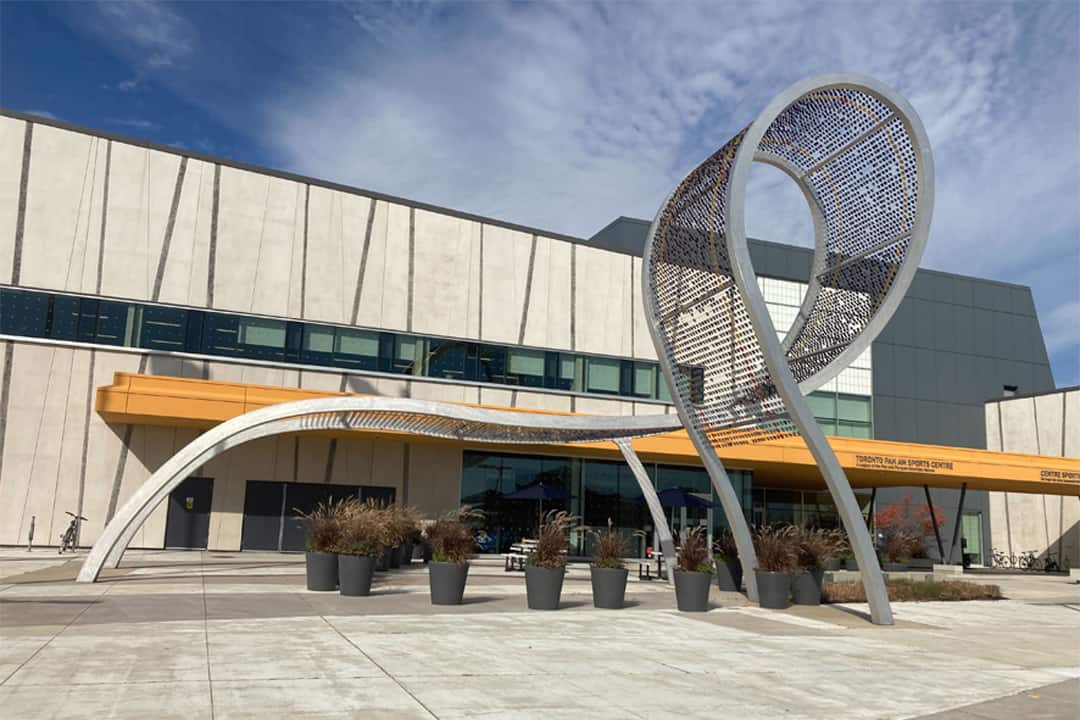Officially opened to the public in September of 2014, the Toronto Pan Am Sports Centre (TPASC) was constructed to host events for the 2015 Pan Am games. Located at UTSC, the facility has been an international leader in championing sustainability practices.
Planning for the centre began in 2008, even before Toronto was awarded the rights to host the games. In the subsequent years, the city approved development and UTSC students voted in favour of a 25-year levy that would contribute up to $30 million to the centre.
The layout
The 312,000 square foot facility boasts an impressive list of amenities including, but not limited to, two Olympic-sized 50-metre swimming pools, a diving pool, a four-court gymnasium, an indoor running track, a fitness centre, a food court, and a climbing wall.
At the time of its construction, the facility was the largest infrastructure investment for amateur sports in Canadian history and has since continued to provide a hub for the international sporting community, hosting events like the Invictus Games and the North American Indigenous games in 2017. As well as hosting athletes from countries around the world, the facility has hosted some of our favourite Canadian Olympic heroes, most notably Penny Oleksiak, seven-time olympic medalist, and U of T’s own Kylie Masse, a four-time Olympic medalist.
The LEED certification system
While the TPASC has had its fair share of athletic greatness, it also stands out for being a leader in sustainable design. The facility achieved Leadership in Energy and Environmental Design (LEED) Gold Certification, for meeting strict standards in all aspects of its construction, and its design upholds high standards in areas of both human and environmental health.
Created in 1993, LEED “provides a framework for healthy, efficient, carbon and cost-saving green buildings.” It focuses on promoting a holistic approach to sustainable design, rather than simply grading buildings on one element. Almost any type of building can apply for LEED certification, and is consequently awarded points for meeting certain requirements. Accumulating 40–49 points means that a building gets a standard certification, 50–59 will achieve Silver certification, 60–79 points means the building is Gold certified, and over 80 points designates the highest rank of Platinum certification.
TPASC has several features that contribute to its high-scoring LEED certification, including 1,854 solar panels, an irrigation rain-water system, green roof blankets that reduce energy consumption, and geothermal wells that help heat most of the building. Additionally, 30 per cent of the materials used in construction were recycled, and 95 per cent of waste from construction was diverted from landfills.
Does LEED certification matter?
While there is some debate surrounding whether LEED certification is simply just another placard developers can put onto their projects to attract investors, conversations about sustainable construction are more important than ever. In our rapidly growing society, LEED is just one of the organizations taking a systematic approach to curb wasteful building practices around the world.


